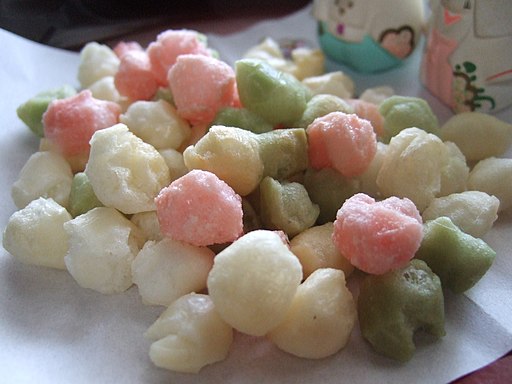Hinamatsuri: Girl’s Day in Japan
Japan has a wonderful celebration called hinamatsuri or girl’s day on March 3rd. It is also known as the doll festival and written as ひな祭り in Japanese. The tradition features colorful foods, sweets, and special dolls called hinaningyou.

What is Hinamatsuri or girl’s day in Japan?
Japan celebrates hinamatsuri, or girl’s day on March 3rd. Although this event is meant for young children, decorations are often put up regardless of age. The hinamatsuri decorations can be like heirlooms that are passed down through generations.
A few days before the event, mothers and girls will display the hinamatsuri decorations and dolls. Girls and their friends will gather together to enjoy special foods. In some locations, they will also participate in a nagashibina. This is where paper dolls are floated down rivers.
This girls day celebration has traditionally carried meaning for a successful marriage. In the past, Japanese people felt that marriage was the highest form of happiness for a woman. By putting these decorations, families could wish for their child to have a successful marriage and future. There is still a superstition that not putting away the hinamatsuri dolls immediately after March 3rd will result in a delayed marriage.
Origins of Hinamatsuri
Hinamatsuri originated from the peach festival which occurred on third day of the third month in the Chinese calendar. These days, Japan runs on the Gregorian calendar and peach blossoms bloom a bit later than March 3rd. However, the peach blossom is still a symbolic part of the celebration.
The first instance of hinamatsuri was in the 17th century, when the Emperor’s daughter began to play with dolls during the peach festival. This idea grew in popularity around the country, and more dolls were added to the doll sets. The dolls were originally meant to be toys. However, as this celebration grew, the dolls became elaborate decorations.
During the Meiji period, the hinamatsuri dolls gained even more popularity as a symbol for the Japanese monarchy. It also represented ideals of the country which was based on family and marriage.
Traditional foods during Hinamatsuri
The traditional food during this celebration feature bright colors and symbolism. Pink, white, and green are particularly important colors.
Hina arare
Midori, CC BY-SA 3.0, via Wikimedia Commons
These are crispy round rice crackers that are in festive colors. The flavor can be both sweet and savory.
Amazake
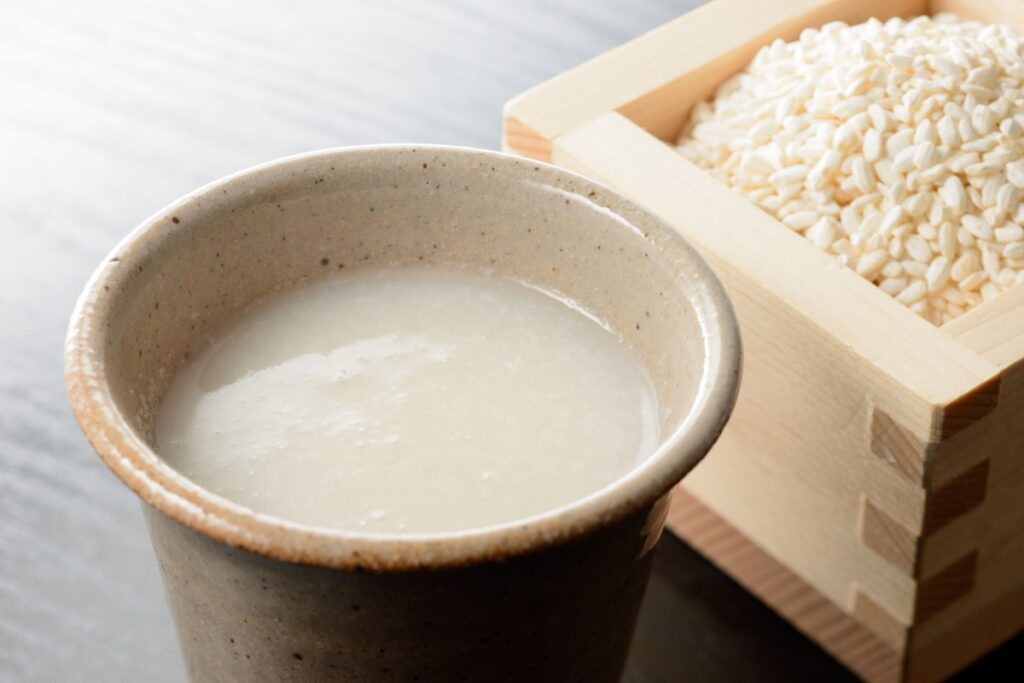
This is a sweet non-alcoholic sake, uses fermented rice. It has a creamy texture and a beautiful white color!
Hamaguri clam soup
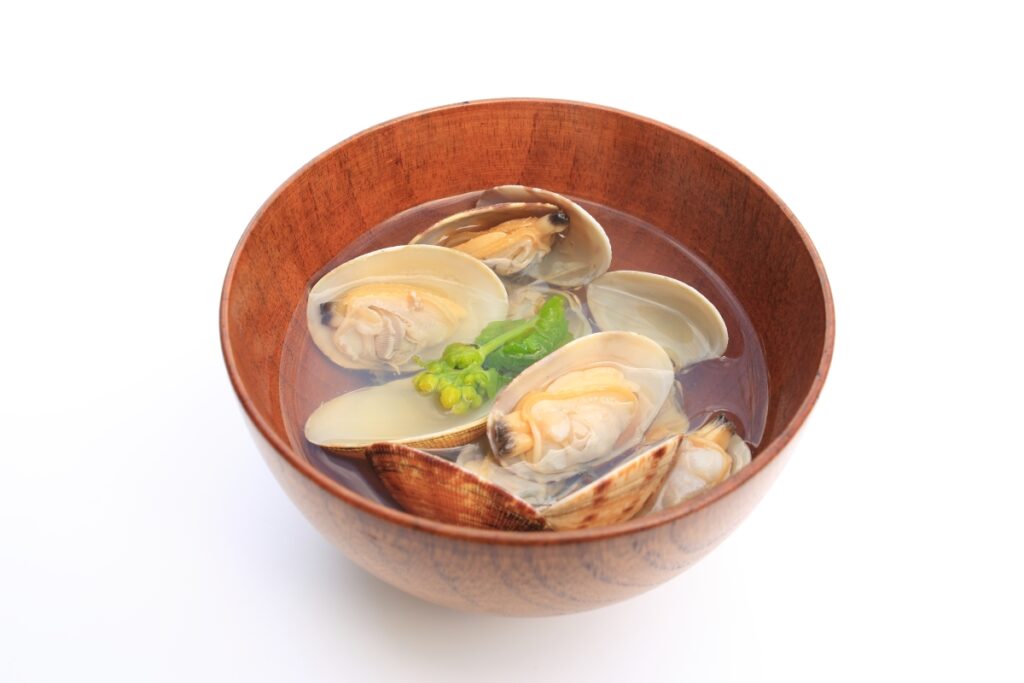
The hamaguri clam is symbolic for hinamatsuri because the clam shells can represent a happy marriage. The two shells will only fit together if they are from the same clam.
Chirashizushi
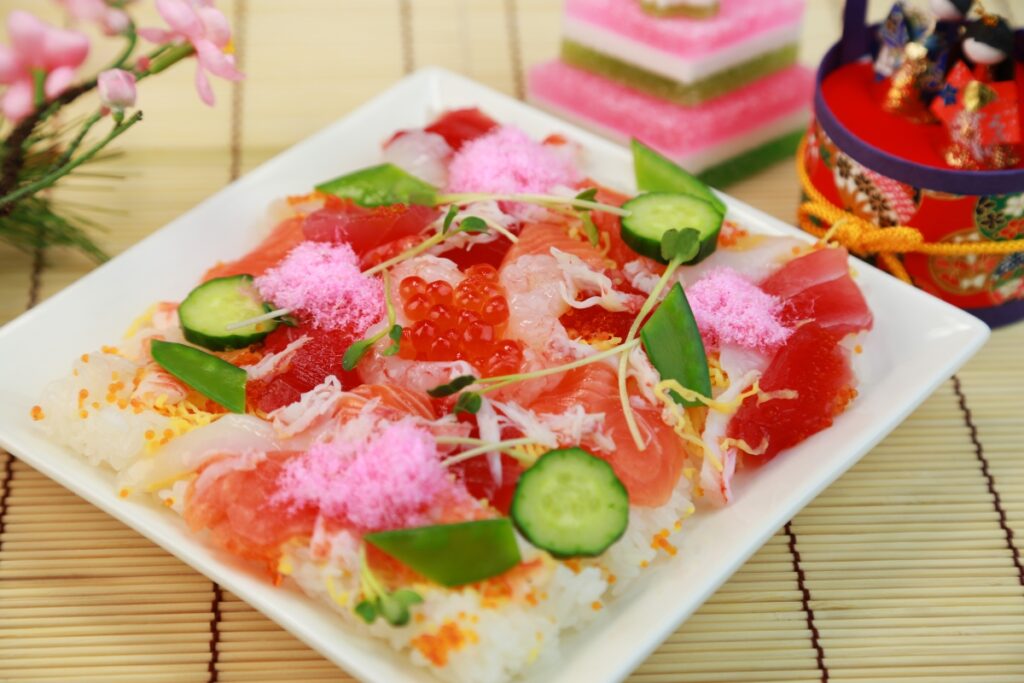
This is a bright and festive sushi that reflects the spirit of hinamatsuri. Different sushi ingredients are placed on top of vinagered rice.
Sakura mochi (cherry blossom mochi)
Ocdp, CC0, via Wikimedia Commons
Sakura mochi, or cherry blossom mochi, are popular sweets for this occasion. These mochi, or rice cakes, are pink colored and wrapped in a pickled cherry blossom leaf.
Hishimochi
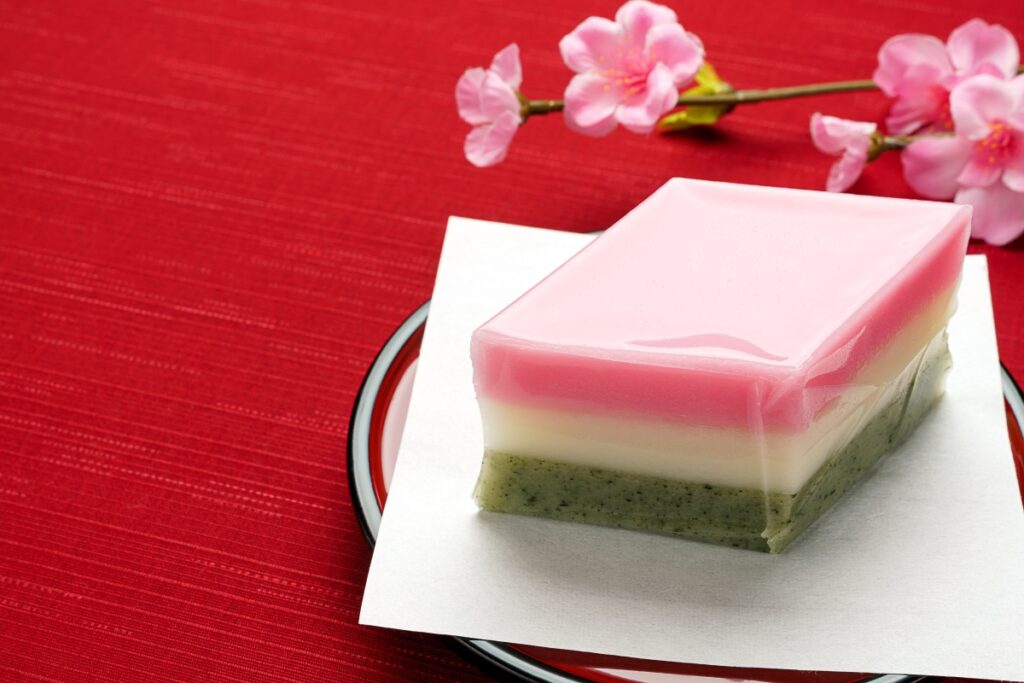
Hishimochi is a three layer diamond rice cake. The three layers are usually green, white, and pink. The green represents the fresh new leaves of spring, the white is the snow that’s melting, and the pink are the peach blossoms.
Hinadan: a traditional hinamatsuri doll set
The main decoration of hinamatsuri is the hinadan. This a tiered doll set that features multiple rows of dolls with different meanings. It depicts a traditional Heian period wedding, but can also represent the emperor and empress. Depending on the hinadan set, there can be up to 7 different rows or tiers! Since these are expensive, many families will choose to only have the first tier.
Note: These dolls used to be toys, but they are now mostly for display only.
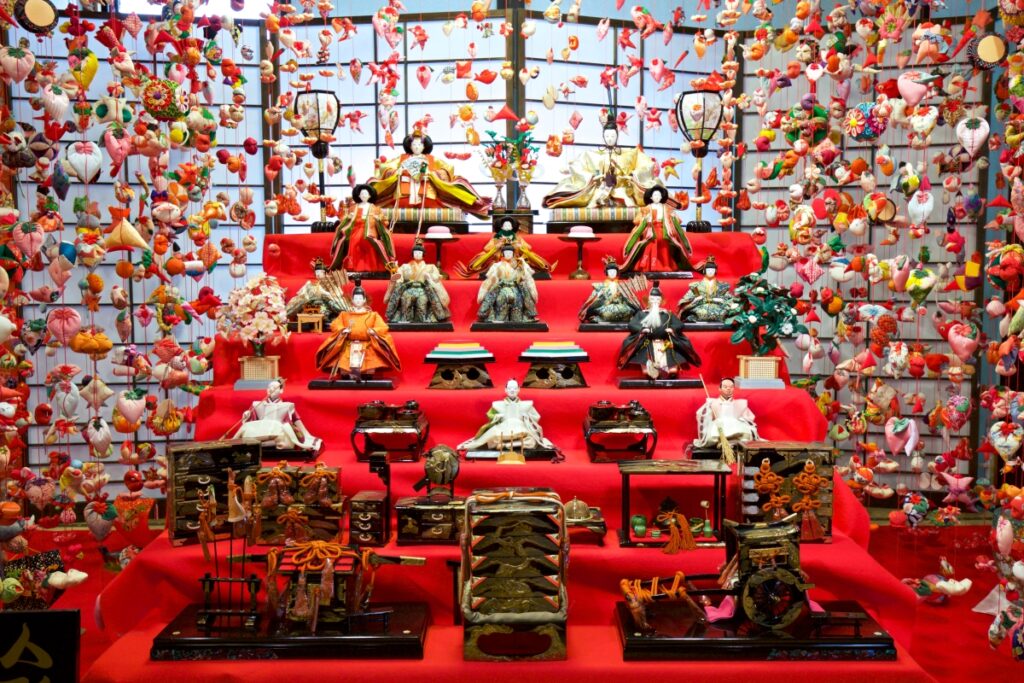
1st tier
This is the top row of the hinadan. It features an elaborately dressed male and female doll. They represent the lord (tono) and princess (hime). Bonbori, the two lamps on either side are also common. Most families celebrating hinamatsuri will have at least these two dolls.
2nd tier
In this tier, there are three women dolls that are there to serve sake to the lord and princess.
3rd tier
The third tier consists of the court musicians known as the gonin bayashi.
4th tier
Below the musicians are the two ministers. These can be the emperor’s body guards or those who help in their administration. In between the minister dolls, there are other items like hishimochi (diamond shape mochi rice cakes).
5th tier
In this tier there are three more male helpers and protectors of the court.
6th and 7th tier
The 6th and 7th tier feature items from the imperial palace. There are no dolls on these levels. Items can be things like chests, carriages, and sewing boxes.
Hinamatsuri, or girl’s day, is a festive celebration in Japan! Be sure not to miss out on all the beautiful decorations if you’re there. Here are some other Japanese culture blog articles to check out What does otaku mean in Japanese? or Chopstick Etiquette in Japan: Rules you need to know!
~Tanuki






